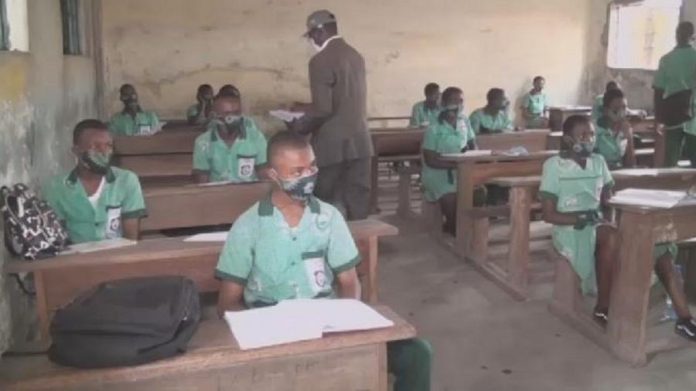After the 4-month pandemic closure, a “phased and gradual” reopening of schools commenced on 4 August, on the orders of the federal government. This was just weeks after Mr Adamu Adamu, the minister of education said, “it is not safe to reopen schools now”. It is also despite the fact that, at least four of the seven measures to be put in place before reopening schools, as stated in the federal ministry of education’s guidelines for reopening in July, have not been met in most schools.
A COVID-19 referral system cannot be established in a situation where most schools do not have school clinics; few schools can ensure availability of ambulances; thoroughgoing de-congestion of classrooms is impossible in most public schools without building new facilities; staff/student committees for regular surveillance, monitoring and enforcement of the guidelines have not been in put in place in public schools, and; ensuring adequate water, sanitation and hygiene where hundreds of pupils have access to about ten makeshift sources of non-potable water is laughable at best.
Even the Presidential Task Force on COVID-19 which was part of the collaborative initiative of developing the guidelines, along with the Federal Ministry of Education in Emergencies Working Group Nigeria ((EiEWGN) expressed anxiety as schools reopened.
Dr Nasir Idris, national president of the Nigeria Union of Teachers is also on record as saying “If the government refuses to put COVID-19 protocols in place, we will have no other option but to meet with our members and withdraw our services because the pandemic is increasing day by day”. But that was only after the schools had resumed.
A week before the partial resumption, Dr Mike Ene, general secretary of the NUT said “following the assurances we got, we have to concur…Some commissioners said they are 80 percent ready and that even NCDC has given them certificates of readiness.” The NUT leadership has to be consistent in defending the health and wellbeing of the pupils their union members are responsible for, and the teachers they represent.
It might not be too late for the union, and other unions in the schools like NASU to provide the necessary leadership for averting what could very well be a disaster. If adequate infection prevention and control measures were not put in place over four months of school closure, is it now that pupils have resumed that governments can be relied upon to provide these? And should schools be reopened before the pandemic’s curve has flattened?
The countries in Europe and Asia that have safely reopened schools are those where the curve has been flattened, and infection prevention and control measures are put in place, and strictly adhered to.
When schools were reopened in Israel – which by the way, has a more functional educational system and infrastructure – before the curve had flattened out in May, there was a sharp spike of infection. Over 200 new cases were recorded in schools within a month and the government had to hurriedly shut them again. The same goes for the US where more than 2,000 students, teachers, and non-academic staff had to be quarantined within weeks of resumption in July.
Teachers unions in several countries, including South Africa and the United States have been at the fore of resisting unsafe reopening of schools. NUT, NASU and other unions in the education sector need to do the needful and be clear in demanding immediate reversal of government’s disastrous policy on this matter, in the interest of the pupils, students and poor working-class people as a whole.
The private schools for children of the rich will most likely be able to meet the demands of preventing and controlling the spread of contagion. But public schools and the large number of private schools attended by children of the lower middle class will not be able to do so.
We are all keen to avoid disruption of our children’s learning process. Our demands must be guided by the need for quality education to indeed be a universally enjoyed right and not a privilege for children of the elite. And this must be within the context of pupils, teachers, non-academic carers and parents’ safety and wellbeing. This requires an overhaul of our educational system and a programme that enables all pupils to be able to access remote learning, whilst the necessary infrastructural and infection prevention and control measures are put in place.
by Segun OGUN









